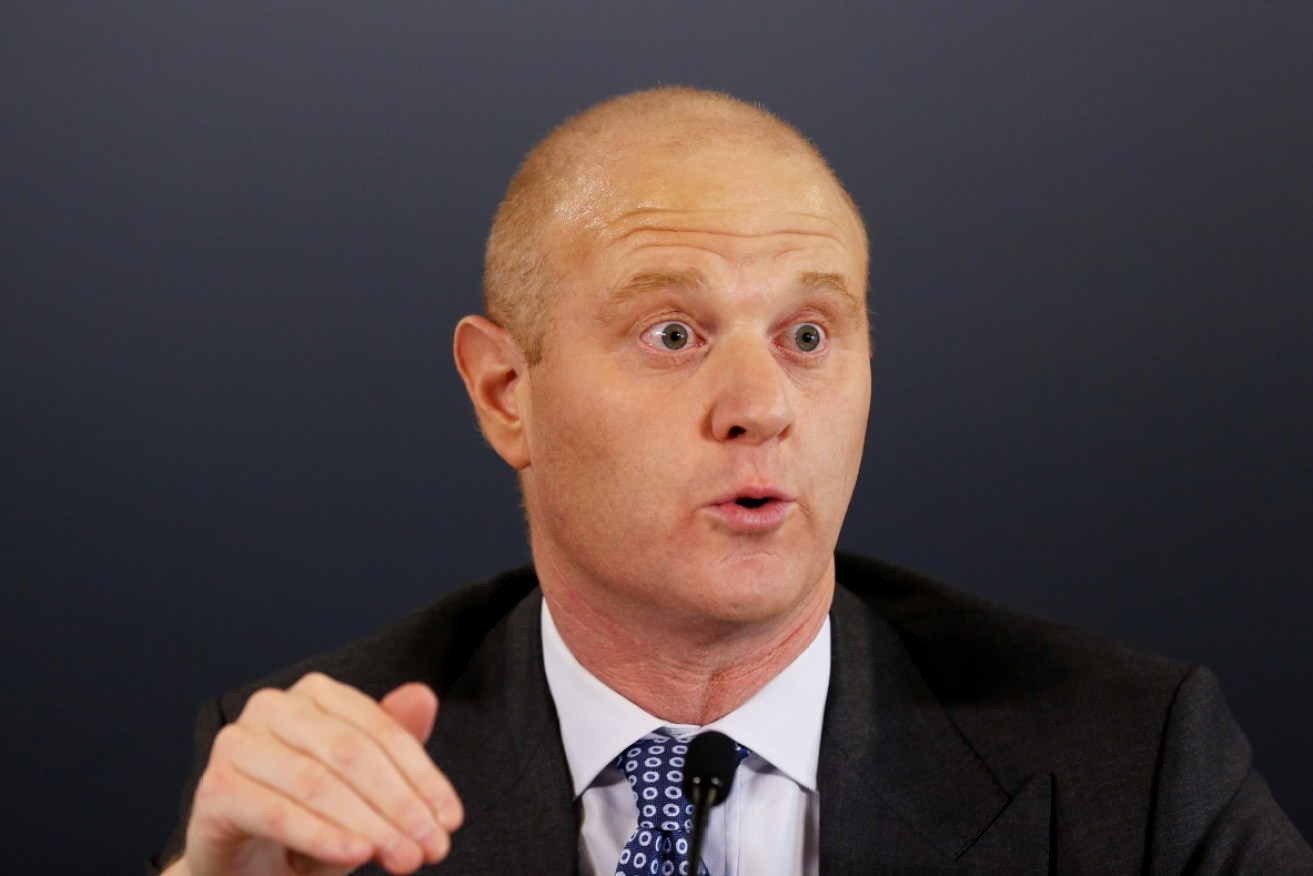Four questions the banks must answer

In a few days the big four banks' CEOs will appear before a parliamentary hearing. Photo: Getty
In a matter of days, the big four banks’ CEOs will appear before a parliamentary hearing. We can predict four of the important questions they will face.
Commonwealth Bank chief Ian Narev will front the Standing Committee on Economics on October 4, followed by ANZ’s boss on October 5, and NAB and Westpac on October 6.

This is the view that will confront bank bosses in the House of Reps. Photo: AAP
These will be the first of annual public hearings, according to the government, which has been accused of instigating them as an alternative to Labor’s push for a bank royal commission.
Anger at the Australian banks has simmered since the global financial crisis from 2007-2009 because of a string of scandals. These include alleged manipulation of the bank bill swap rate; the CommInsure revelations; and claims that bank employees are pushed to sell unnecessary products.
Labor and Greens MPs, who collectively make up four of the 10 seats on the standing committee, have revealed to The New Daily some of the questions they will ask. And RBA governor Philip Lowe has suggested some topics, too.
Committee members from both parties doubt the usefulness of the hearings, given the three-hour time limit per bank boss and the fact that Treasurer Scott Morrison wrote the terms of reference. But they hold out hope.
Why such high profits?
 Greens MP Adam Bandt, a member of the economics committee, has told The New Daily he intends to ask the big four banks why they are making bigger profits compared to global banks.
Greens MP Adam Bandt, a member of the economics committee, has told The New Daily he intends to ask the big four banks why they are making bigger profits compared to global banks.
As noted by RBA governor Lowe last week, Australian bank customers, not shareholders, have “largely borne the cost” of recent economic instability.
The measure Dr Lowe referred to was return on equity, which is net income divided by shareholder equity expressed as a percentage.
Only Australian and Canadian banks have maintained returns on equity of around 15 per cent during the financial crisis and its ongoing fallout, while Japan, USA, the UK and Europe have remained below 10 per cent, according to the Reserve Bank.
Why such high pay?
Labor’s Matt Thistlethwaite, deputy chair of the economics committee, has pledged to The New Daily to raise the issue of bank CEO pay.
The issue is back in the news after the RBA governor attributed the “poor outcomes” of the banks to “incentives within the organisations and that’s largely remuneration structures”.
Australian CEOs are paid 93 times average worker wages, according to a study published in the Harvard Business Review in 2014 (see the table to the right.)
Much of the focus has been on the sales targets imposed on lower-level employees. But Mr Thistlethwaite is determined to put the spotlight on executive pay as well because “the culture set at the branch and regional level flows down from the senior executives”.
The issue is by no means restricted to the banks. But a landmark Australian study conducted in 2004 found that “the rise and rise of bank CEO pay is both performance insensitive and perverse”.
The Australian Shareholders’ Association is conducting a review of the take-home pay of the CEOs of the top 200 companies, including the banks, because it suspects remuneration is decoupling from harder-to-satisfy measures of company performance and linking instead to vaguer, easier-to-satisfy measures of diversity, culture, etc.
Why are small businesses getting slugged?
 Dr Lowe pointed out last week that the cost of credit for small businesses has been much higher than home loans and other forms of credit.
Dr Lowe pointed out last week that the cost of credit for small businesses has been much higher than home loans and other forms of credit.
He explained that the banks repriced the cost of these loans during the global financial crisis to account for what they perceived to be higher risk, and never unwound these higher rates.
In response to several questions from Liberal MP Craig Kelly, Dr Lowe said it would be a good idea to ask the banks whether it was justifiable to keep charging small businesses this higher risk premium.
So we may see this question as well.
Why such high credit card rates?
Labor leader Bill Shorten and Shadow Finance Minister Jim Chalmers have recently complained about the “big gap” between credit card rates and the official cash rate.
“There is no case being made by the banks for the reason why, whenever is there is a reduction in interest rates, even if they pass some of it through to mortgages and some through to depositors, you never see significant reductions in credit card interest rates,” Mr Shorten said in August.
These concerns may well influence the three Labor members on the Standing Committee on Economics.
The discrepancy between average credit card rates and the Reserve Bank’s cash rate is now at 15.24 percentage points, according to finance data firm CANSTAR – the highest in recent memory.









